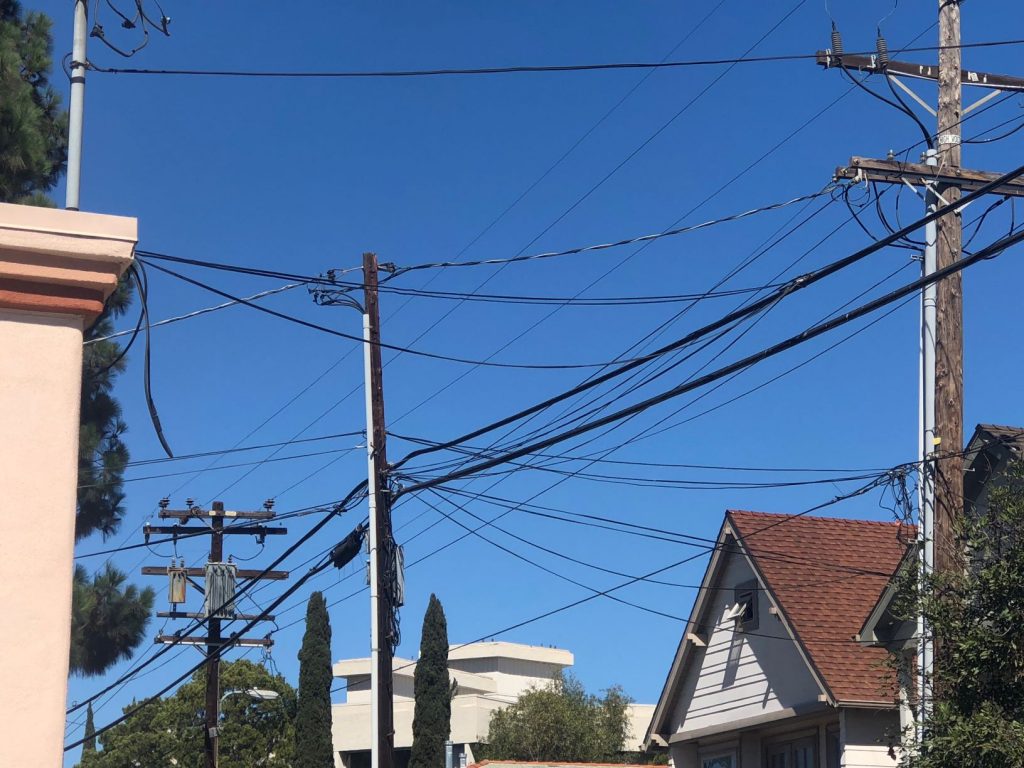 Safety, aesthetics, reduced fiscal risk and liability, strengthened service reliability, increased property values and tax base, and greater accessibility and walkability are the main reasons for Coronado to consider undergrounding the power lines. The city is making a concerted effort to make residents aware of the variables of this 28-mile, 1521 utility pole undergrounding project, which can be completed in phases. Undergrounding the entire area adds up to a big estimate of $175 million, but what is being considered is a much smaller proposal that will help accelerate the current undergrounding timeline.
Safety, aesthetics, reduced fiscal risk and liability, strengthened service reliability, increased property values and tax base, and greater accessibility and walkability are the main reasons for Coronado to consider undergrounding the power lines. The city is making a concerted effort to make residents aware of the variables of this 28-mile, 1521 utility pole undergrounding project, which can be completed in phases. Undergrounding the entire area adds up to a big estimate of $175 million, but what is being considered is a much smaller proposal that will help accelerate the current undergrounding timeline.
In September 2017, the city council directed the city staff to initiate an undergrounding study. Harris & Associates, who have extensive experience in this area, were selected to complete the analysis and identify options to move forward with a Utility Undergrounding Master Plan. After the presentation at the September 4, 2018 city council meeting, 12 priority areas were identified. Two public forums were held in April to share information with the public and seek input.
One of the biggest questions for this proposition is where the money will come from. City Manager Blair King explains, “The source of the $33 million is a repayment from the former Redevelopment Agency to the City of Coronado’s General Fund. Over the life of the Redevelopment/Community Development Agency, the city loaned money to the agency with the expectation of repayment. In 2018, in order to help the school district reach ‘Basic Aid’ faster, the city refinanced the loans, which resulted in a one-time lump sum payment to the city’s general fund. The terms of the refinancing restrict the funds to capital projects.” King also noted that using the money now is prudent because construction costs are escalating faster than the return on investments.
 The proposed funding alternatives the city is considering include:
The proposed funding alternatives the city is considering include:
- Spend the $33 million that the city has currently designated for undergrounding projects. For scope of projects, this could fund the four highest ranked areas:
- First/Second Streets
- Margarita/Bay Circle
- Pomona Avenue
- Silver Strand completion
“Through the efforts of concerned citizens, two major undergrounding projects have already occurred along our state scenic highway. One and a half miles of overhead wires remain. The previous projects used a combination of resource sources (federal grants, county and local funds and Navy manpower (Seabee training)). We should look for opportunities to share the costs of the ‘last mile’ of wires on the Strand,” comments Councilmember Marvin Heinze.
- Stretch the money options by asking property owners in the targeted areas to pay a portion of the costs. One way to do this is by creating Assessment Districts either by a first come, first served basis or by priority areas. The first would allow property owners to form districts, and the second alternative is to have the city work with the highest priority neighborhoods. Either way, these Assessment Districts would then receive 50 percent of the projected costs from designated monies from the city’s general fund.
- Adopt a Utility User Tax which would require a two-third registered voter approval, which is hard to achieve. Monies from this option would supplement the existing $33 million and stop when the undergrounding project was complete. The estimated tax revenue from this option is $500,000 to $600,000 per year. This option would potentially cost each residential customer $8 to $12 per month.
- Renegotiate the San Diego Gas & Electric (SDG&E) Franchise Agreement, which currently expires in 2028. This was done successfully by the City of San Diego and has helped accelerate their current undergrounding project. With this option, the impact on future utility rates is difficult to project.
 King points out that the next steps in this process are to compile the community input that the city has received directly and from the two community forums and submit a proposal at the May 21 city council meeting. The City Council can then select their preferred funding strategy and scope of the project and provide further policy and direction. Implementation of these types of undergrounding projects takes approximately two to three years for SDG&E to complete.
King points out that the next steps in this process are to compile the community input that the city has received directly and from the two community forums and submit a proposal at the May 21 city council meeting. The City Council can then select their preferred funding strategy and scope of the project and provide further policy and direction. Implementation of these types of undergrounding projects takes approximately two to three years for SDG&E to complete.
This is not a new idea and has been ongoing for many years. The one-time project money would help expedite the process. Councilmember Heinze says of this project “Coronado has been slowly working to get its utilities underground for many years. All new construction and major renovations underground their utilities from the street to the house. If the community still desires the increased safety, reliability and aesthetic benefits of undergrounding as a long-term goal, we have a chance to make a significant step in moving additional street side utilities underground. City staff is gathering information on various options for stretching the funding. Interested citizens should make sure they contribute their thoughts so the council can make a wise decision for the future of Coronado.”





